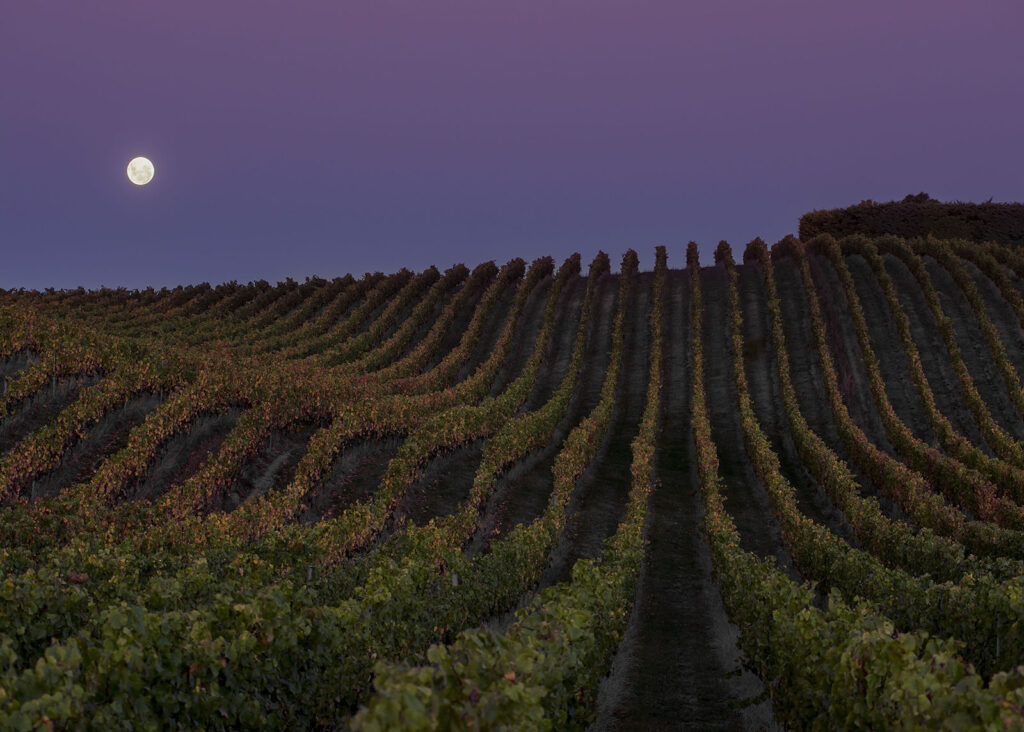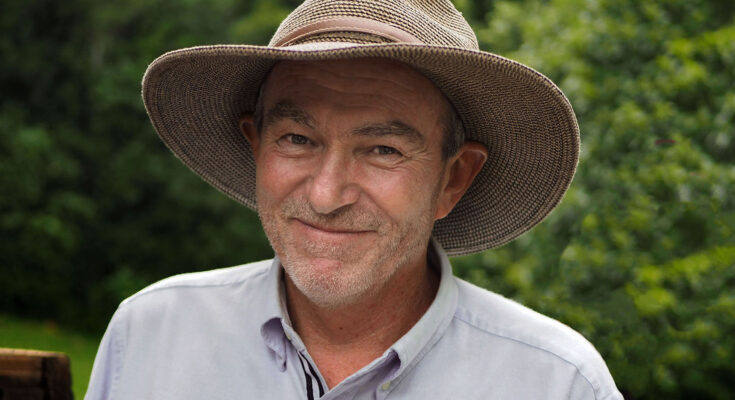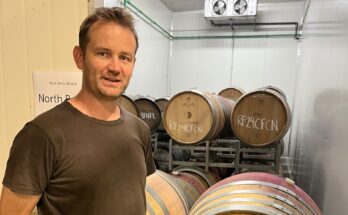I roll into Marlborough early one morning and make my way over to the Omaka Valley, to Greywacke, and a meeting with Kevin Judd. A legend and pioneer of New Zealand wine, having been the original winemaker at Cloudy Bay’s inception – now since 2009, with his own family wine company producing a distinctive and exceptional range of wines. He’s also a talented and well-regarded photographer.
Kevin Judd: 2009 was our first vintage, and we made seven wines then and we make seven wines now, so it’s a consistent portfolio so far. The only wine that has changed a bit is the botrytis wine. In its first release it was a Gewürztraminer, second release was a Riesling, and then the third release was a Pinot Gris. Since then we’ve mainly concentrated on Pinot Gris. Riesling makes a great sweet wine here, but everyone makes a Riesling and it’s hard enough to sell as it is.
The bulk of our business is the Sauvignon Blanc of course. Because it doesn’t matter what we want people to drink. The world wants Sauvignon Blanc – from this part of the world. Particularly in places like the US. It’s really difficult to convince people to look outside the Marlborough Sauvignon Blanc.
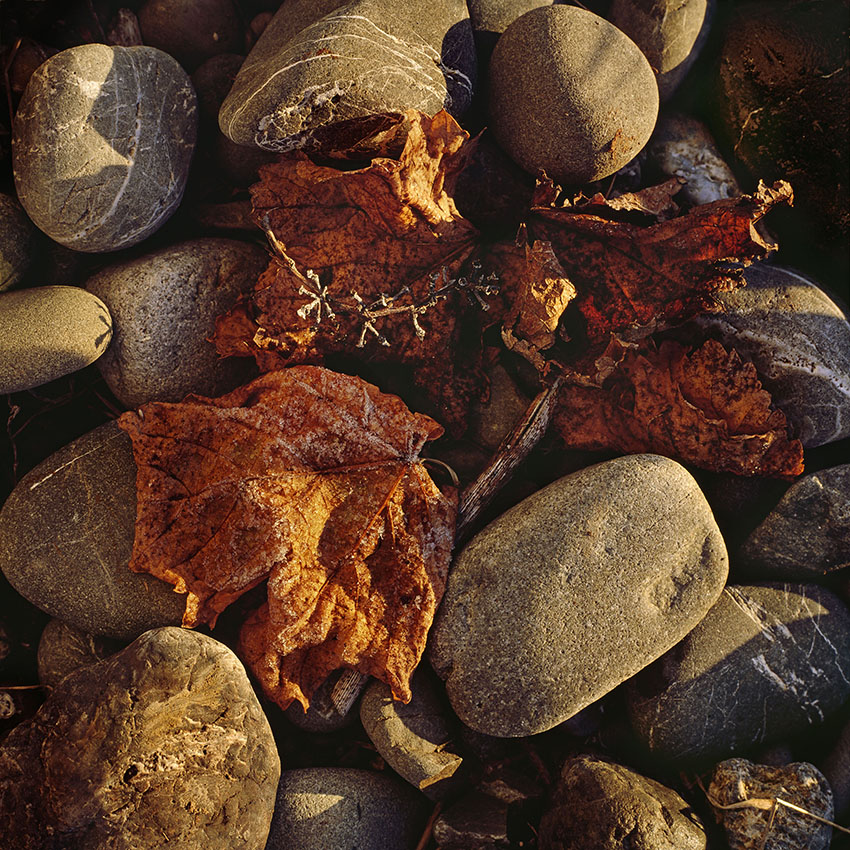
Winefolio: Does it get you onto a list though, where you might then be able to leverage towards some other things?
KJ: Sometimes. Sauvignon Blanc to Chardonnay is about 100-1 for us in USA though.
WF: What would you say you’re best known for in the domestic market here in New Zealand?
KJ: We export 96% of our production and yet the biggest market on the planet for Chardonnay and Pinot Gris, for us, is New Zealand.
We get really good response to the Chardonnay in New Zealand. If you added up the Pinot Gris and Chardonnay that we sell in New Zealand, it would be the same as the Sauvignon Blanc. Whereas in most markets it is totally different.
New Zealand is a very important market for us. We don’t export by preference. New Zealand gets whatever it needs. We’ve got good presence and wide distribution. Lots of good restaurants and retailers. You’ll find us in some supermarket locations, but not many because that’s just a cut-throat business.
For China it’s frustrating because it’s starting to increase. And they say “I know it’s a small vintage but could we please have twice as much next year?” We can do a little bit more, but we can’t do that. England and the U.S are really good, and then we have a whole bunch of markets that are about 10% of that – Singapore, Norway, Hong Kong, Sweden, Japan and China. Then a smattering of markets that will only take a pallet or two.
WF: Sweden! That name crops up all the time when I talk to people about distribution.
KJ: We love the Scandinavians, love going there. Wild Sauvignon, which although it is not our biggest production, we think of it as our ‘signature wine’ – the one we hang our hat on – and its biggest market is England. The second biggest market is Norway. Our importer there love it.
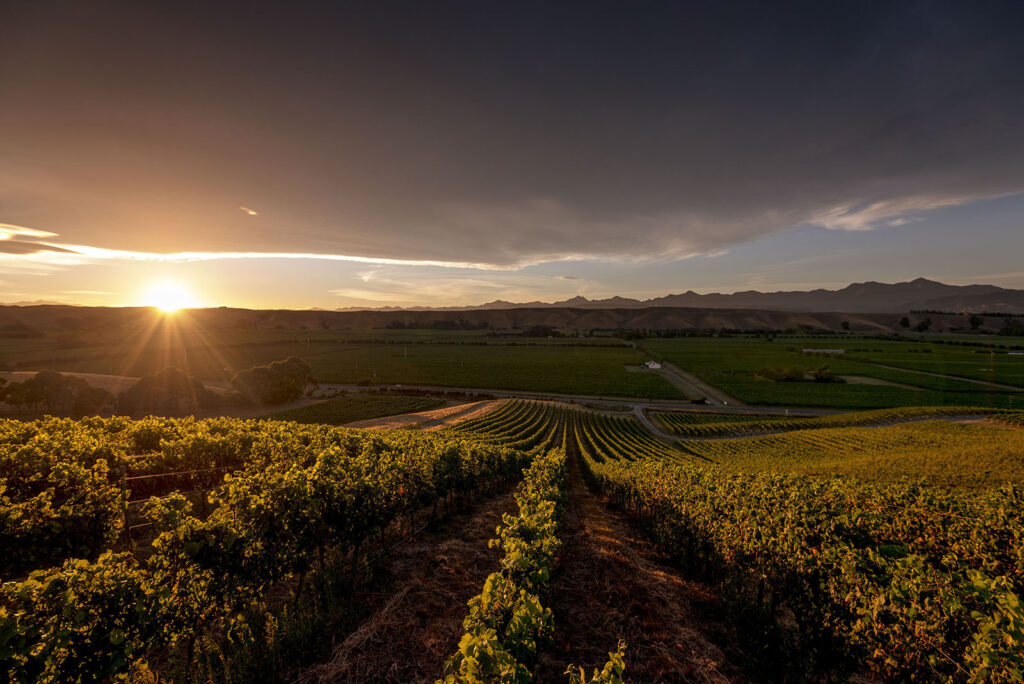
WF: I’m not much of a one for business. My background is arts – I studied graphic design and I’ve always loved photography, typography – things like books and magazines, telling stories on the page. I’m lucky that what I wanted to do when I was sixteen, I’m still doing now.
KJ: I went to an ‘open space’ High School in Australia, where I was brought up. They had a dark room and I enrolled into Photography and Graphic Design. I was really into it, but got talked out of it as a career.
WF: I’ve only really concentrated on wine as such in the last couple of years. When I moved to New Zealand in 2003, it seemed obvious to me to get involved in Tourism. And that’s gone well, but my interest has always been specifically in wine. I was part of the first Cycle Trail Guide that was done with Tourism New Zealand backing and the AA. Do you have a cycle trail here in Marlborough?
KJ: There is the ‘Ride The Golden Mile’ cycle trail which includes the Rapaura / Renwick wineries, but we could do with a more extensive trail like the Clare Valley wine cycle trail in South Australia.
WF: Anyway – back to the wine! I like this one – I like that it is not too pungent. I did some judging this year, and when you walk into a room with 150 glasses of Sauvignon Blanc on the tables, you know about it!
KJ: You don’t need to tell me about it! Our aim with this wine is to make a subtle, textural, tuned-down, volume-down, drinkable Sauvignon Blanc. So what you’re saying is correct! It’s largely cultured yeast in stainless steel. 90-something percent. A little bit of wild ferment and barrel age. It’s our interpretation of the classic Marlborough style. Something that’s nice and ripe, not too acidic.
WF: This is quite different from most. Do you use the regular clones of Sauvignon Blanc?
KJ: There is no significantly different or interesting clones that I know of. Most of New Zealand Sauvignon Blanc is UCD1. They brought in some Bordeaux clones quite a long time ago that were all the rage. We had some at Cloudy Bay but they didn’t really give anything different, and they were more botrytis prone. Our target tonnage per hectare is only ten. I look at some vineyards and I just sigh. Big walls of green and shoot tips growing in the late summer. Over-watered, too shady and they make pungent Sauvignon Blanc. We like to look at a vineyard and be able to see through the leaves, and they’re generally not dark green. You make a different wine growing grapes that way.
This wine is largely about the vineyard we source from. The way we grow and our aspirations for yield – things like that. When I’m in the vineyard, sampling, I’m making a decision largely on what I see, not the numbers. What I see, for me, when I walk out into the vineyard. We had a vineyard this year that just looked green. The fruit was green, and we got the sample back saying is 22.5 brix. You’d say – well, you pick it. But I didn’t pick it. We hung it because the fruit needs to have a slightly golden look to it. And when it does that’s when you get that lovely stone fruit, and away from the really green flavours.
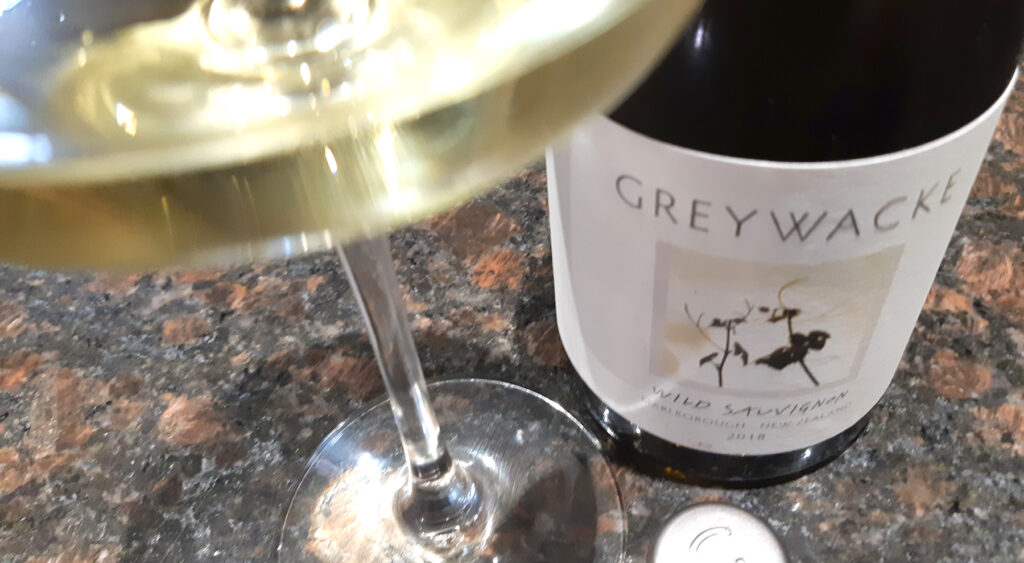
We do the same with both wines but the Wild Sauvignon is an absolutely and totally different winemaking technique. If you know someone who absolutely doesn’t like Marlborough Sauvignon Blanc and you can convince them to taste this wine, then 99% of the time they say “oh yeah, that is good”.
We were talking about this yesterday, about how quickly you could get stuff on the market these days. Our 2020 Wild Sauvignon hasn’t been filtered yet. It’s just finished malolactic and its sitting in a tank, unsulphured and will be released early next year. You can’t hurry that, when you’re working with wild yeast. They just need time.
WF: For a wine with the level of complexity that the Wild Sauvignon has, it’s also very nicely balanced – it’s already knitted together quite well. And I’m thinking this would go for years? I like the range of wines that you can get from Sauvignon Blanc. I’ve had a few of the skin ferment natural wines, and I love that savoury, oxidised, tannin character. It’s really interesting. I love wines that have character. I know people who drink a typical Sauvignon Blanc from their supermarket, and that’s literally the only wine they drink. Like an addiction, it’s all they want and all they need.
KJ: Yes – would you like to try an older one? This was released late last year.
WF: Oh, so it’s not just a dusty old bottle you’ve retrieved from an archive?
KJ: (straight faced) We call it ‘archive release’. (laughs) it’s a good idea.
WF: Brilliant! Get me on the Marketing team.
KJ: It’s a wine that we bottled and released years ago, but we are re-releasing it and calling it ‘Archive release’ in 6-packs.
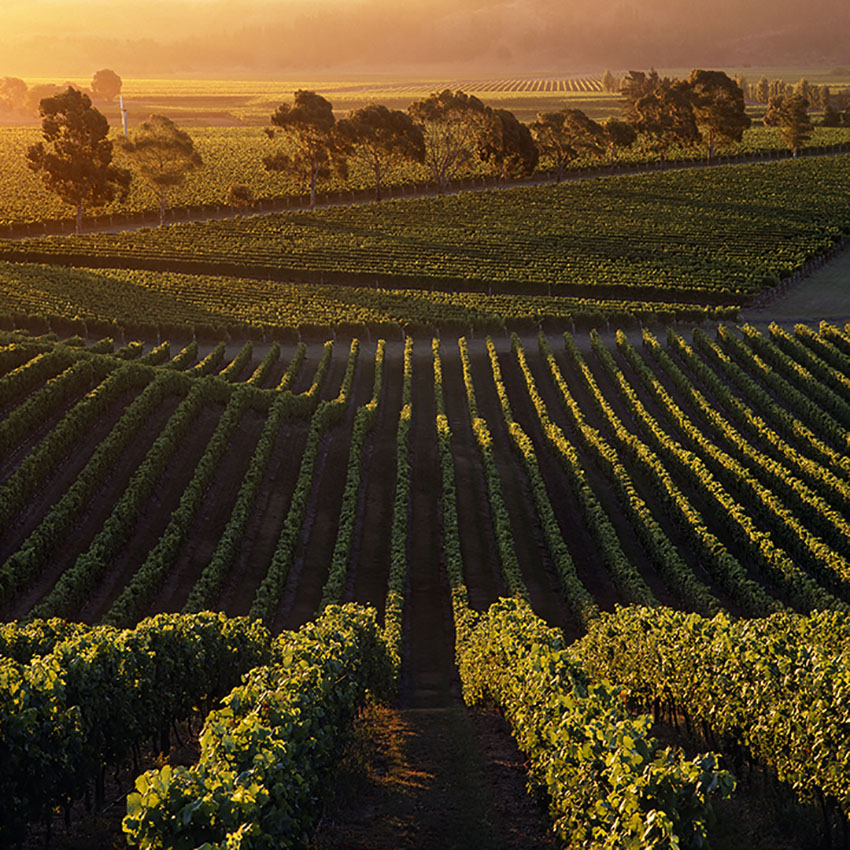
The volume is pretty small so you’re not going to see it everywhere. It is commercial though – we’re putting away a hundred or so cases every year for re-release to show people it does age. They last a long time.
WF: Decades I would say. Seriously. I think you could definitely drink this in twenty years time. Gordon Russell and I had a chat about older Pinot Gris and he thinks the 2003 and 2004s he has in the library have outlasted his Chardonnay, for example.
KJ: There’s Pinot Gris and Pinot Gris though. What he’s making and what we’re hopefully making – they age surprisingly well. But there’s a lot of stuff that won’t age. James Halliday said making good Pinot Gris is like making a painting but only using white paint. You’ve got to use texture.
And if you ever hear that Greywacke has released a natural wine or an orange wine, you’ll know I’m dead. However – when I look back at the me that was – that started at Cloudy Bay – and the way I make wine now, there’s no comparison. When I arrived from Australia and I started making Cloudy Bay, I was brought up in the days of Brian Crozier, Tony Jordan with modern winemaking – special yeast, gas cover, cold fermentations. Everything very precise, controlled and anaerobic.
We employed James Healy at Cloudy Bay and he’d been inspired by what Michael Brajkovich was doing. One day he said ‘lets try some wild yeast fermentation in a Chardonnay’ and he was persistent … So, in the end I said we’ll do an experiment… and the winery stank of sulphides. I said ‘this is just a waste of good juice’ but then 8 or 9 months later these really, really interesting wines were evolving in the barrels. And I was like ‘well, actually…’
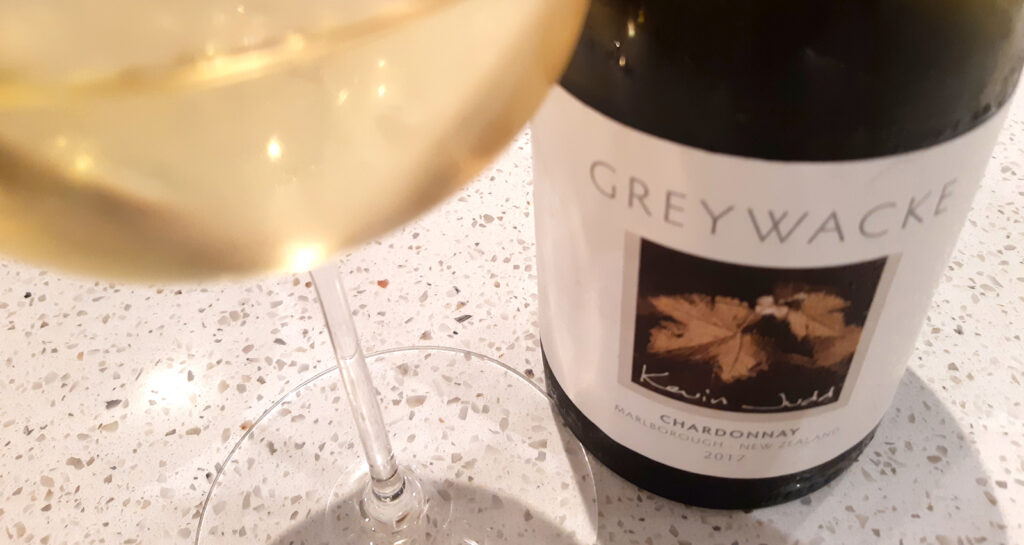
So up until that point, which was 1990, I’d never used a wild yeast in my life, and now I’ve got a whole range of wines that are all wild yeasts. Putting juice in barrels and not adding any yeast, or controlling ferment temperatures was so utterly abhorrent to the person I was in the late 80’s.
With this range of wines that we currently make at Greywacke, our ethos is to absolutely try and minimalize phenolic pick-up from skins. Our Sauvignon Blanc we pick by machine because it’s got very thin skin, and very low phenolics. And it makes a lot of sense to do it that way because you can work really quickly and you don’t have to have millions of pickers, it’s just much more logistically possible.
You couldn’t make Chardonnay like this though, doing it that way. But all our other varieties we pick by hand and whole bunch press. We try to minimise the phenolics, so we’re the opposite to a skin-contact ferment. The Chardonnay, Pinot Gris and Riesling we don’t add any sulphur dioxide until after pressing which is also very foreign to the ‘early me’. In the early days in Australia, with Riesling you added not only sulphur dioxide, but ascorbic acid and you tried to exclude oxygen wherever possible. But now I’m convinced that the opposite of that is the best way to go – by a country mile.
We don’t aspire to get a lot of juice per tonne. We don’t press hard which keeps the pH lower, and we don’t add sulphur until after pressing which helps in minimalizing the amount of phenolics in the wine. I like wine that ages well and I find that if you add sulphur dioxide early in the piece, then you find it will start increasing in colour rapidly in a couple of years.
All of our Chardonnay juice goes straight from the press to barrel – so every wine is slightly different; our wines are made to a way that’s specific to that wine. We don’t have a ‘way’ of making white wines and they’re all made like that.
Our aspirations and the crop levels are different for each wine. Pinot Gris I want the grapes really, really ripe. As I said before when I’m sampling I make a decision on what I see half the time. With Pinot Gris if the leaves aren’t going yellow and the fruit is not going a little bit saggy, we don’t pick it. Even if it’s 25 brix. Well, that might be a slight exaggeration.
WF: What’s the residual sugar on that?
KJ: That one – I think it’s 10, they’re always around 9 to 11.
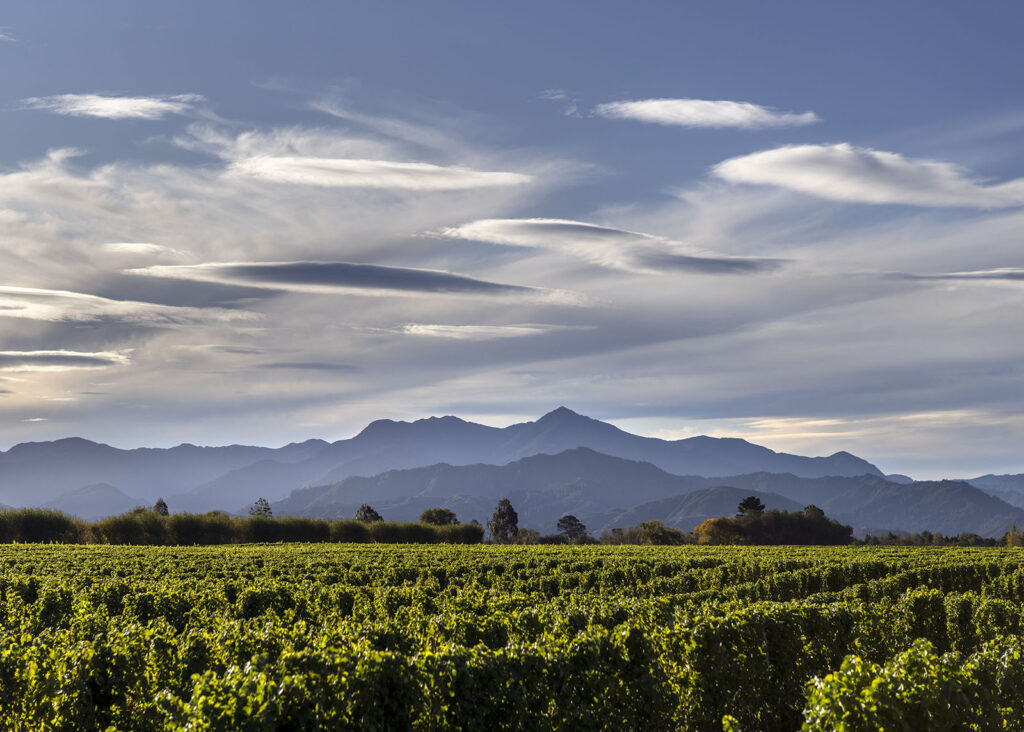
WF: That’s very me, this style. I like how it’s richer, not necessarily sweeter – that’s a hard balance to achieve, I find.
KJ: With Pinot Gris we’re now running at about 75% wild ferment in old barrels. Then the balance is in a stainless-steel tank with cultured yeast. We combine it all in the end to give the wild yeast a bit of a boost from the cultured yeast. Often, they can be a bit funky and gangly, like a teenager, so we sulphur it and put it back to barrel for another 4-5 months, after it’s stopped ferment; to let it open up and settle down.
WF: I just noticed you don’t do a rosé. Did you not get the memo?
KJ: The one where someone said “don’t you want to make money?” We have a wine that keeps the accountants happy – don’t worry about that.
Another thing that drives me nuts is the amount of wine people and journalists that poo-poo Pinot Gris. There’s a lot of dross out there but when it’s good, it’s good. There’s a huge variation in clonal material in New Zealand. Some Pinot Gris are the Geizenheim clones and their bunches are massive. And if you allow it, a lot of the clones will crop really crazy high. And then some people go out there in the middle of the day and machine harvest it and pick these great big crops. You can make wine from it, but it’s not going to be any good.
I haven’t done much on Instagram recently but last year I put up a series of photos of winemakers. Did you see any of those?
WF: I liked every single one of them! Some of them were amazing portraits.
I love photography. I’ve got books and books on it. Do you remember that book ‘Pictures on a Page’ from the 70s? I can’t remember the author but it’s like a textbook – I bought it when I was studying graphics and it’s about photo- journalism and photo editing – how photos tell a visual story. It just captures a single moment – a bit like wine does.
KJ: Try this 2009 Pinot Gris.
WF: OK – this doesn’t have an ‘aged’ character at all. I wouldn’t know how old it was if I had it blind. That’s only got like a 10% development in colour for example from the current vintage.
KJ: I opened one up the other day with Clive Weston. I opened a couple of the first vintage wines and hadn’t tasted it for a couple of years. It’s a good glass of wine. Not everything has aged as particularly well as that, but the Pinot Gris is good.
The Riesling is 50% wild ferment. It’s been made the same way since day one, pretty much. We pick it not particularly ripe, but not unripe- when it’s still got some reasonable acid – around 21 to 22 brix. Hand-picked from a 30-year old certified organic vineyard. It goes into tank, and then half of it goes into old barrels and half of it into a stainless steel tank. About three quarters of the way through ferment we’ll take it out of the barrel and blend it all together in the tank.
We stop it with a certain amount of residual sugar. Most people guess that it has between ten and fifteen, but it’s actually twenty. The thing about this wine is keeping the pH really low because that’s the power of the acid and it gives the acid crispness. The low pH and the residual sugar really sort of counteract each other and give a nice juicy, mouth-watering sweet-sour thing. For me this shows quite a bit of wild character – what I would call a lanolin / linseed smell, somewhere in that vicinity. If we’re doing a Greywacke dinner we normally serve this as an aperitif.
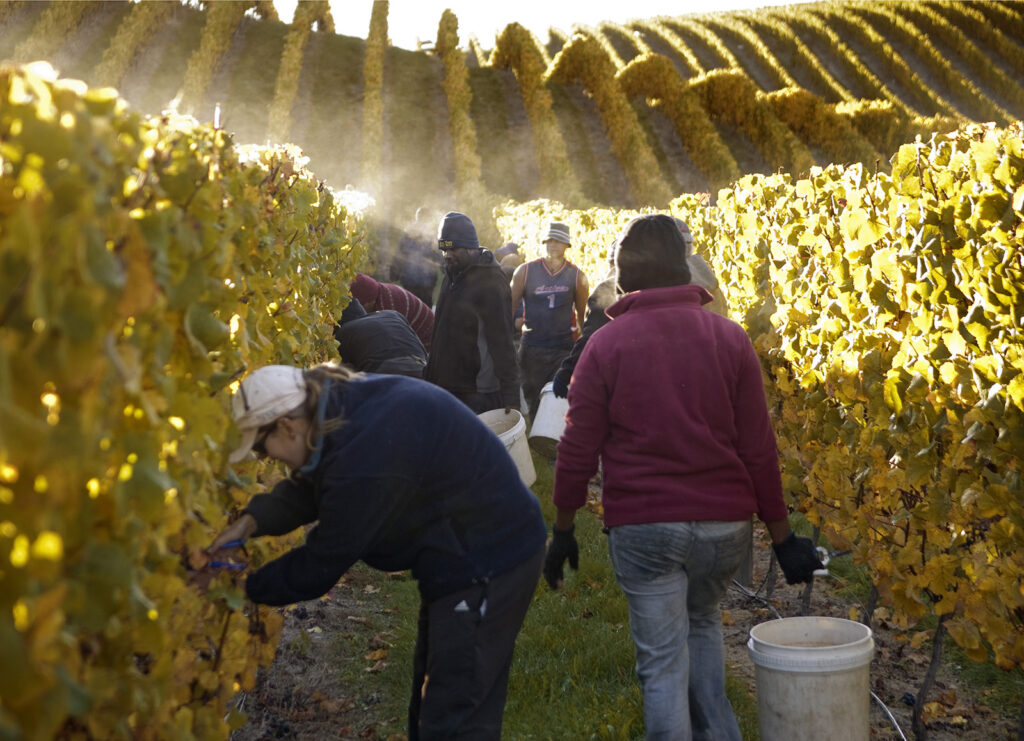
Our Pinot comes from hillside vineyards – some of it in this valley across here – Kimberley and I own one hectare on the hill. The principal source block is called Yarrum, and it is in the next valley over in the Brancott. If you look up you’ve got the Clayvin at the top, and the Yarrum over that way. A mix of clones, mainly Dijon. This is the first we’ve released from our new 12-month barrel programme. We used to leave it for 18 months.
The barrels are quite heavy toast, so the barrels are quite charred and we only use one cooper – Tonnellerie Mercurey. Most cooperages will have different forests and different toasts, and there is a house style – which I like – obviously. For the Wild Sauvignon we use a very light toast.
WF: It’s a lovely, savoury wine. Quite brooding – dark fruit.
KJ: It is quite a big wine, the 2018 was more delicate.
WF: Some of the Pinot coming out of Marlborough is fantastic now. And you look at some of the vineyards and there’s no wonder. The right place is so important.
KJ: It took a while for Marlborough to get it right. We were making Pinot Noir at Cloudy Bay in 1990. But it was the wrong clones grown in the wrong place. People think of Marlborough as being flat, machine harvested, corporates… We do this Pinot Safari taking people along the back routes and show them the great scenery. All the great Pinot is coming from great sites and making stunning wines. But Marlborough is always going to make a complete set of different quality levels of Pinot Noir. It’s not all created equal, and that’s the way it is.
WF: But that’s the same in other places – you can find some stuff that comes out of Central that is pretty average.
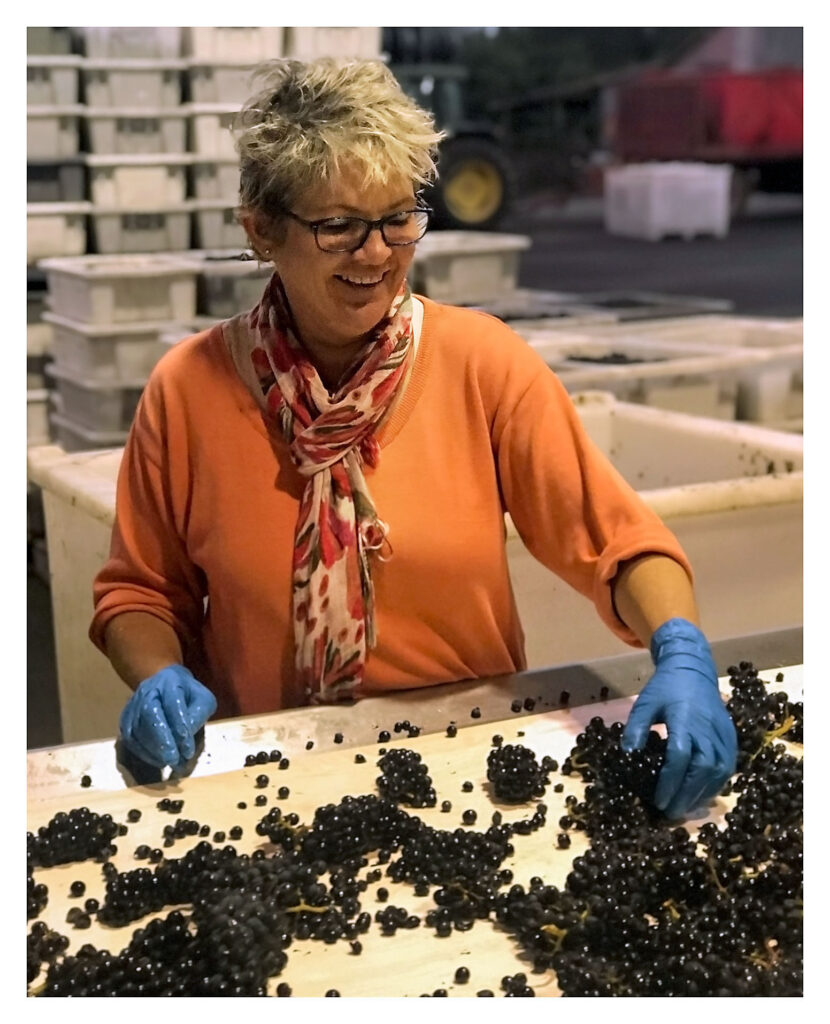
Kimberley Judd sorting Pinot Noir
KJ: This last wine is our botrytis Pinot Gris 2018. Heavily botrytised fruit, 50% wild yeast and barrel fermented. Never thought I’d make a botrytis wine with wild yeast. We don’t make very much – it’s a very hard thing to sell.
WF: You said the range has stayed the same throughout – do you have any plans for anything extra?
KJ: We only do one level. No fancy single vineyard reserve wines. We actually do make single vineyard wines, but we don’t call them that. And we don’t have a Reserve wine, a pinnacle wine. We’ve got the archive release series which includes some Chardonnay and Pinot. That’s plenty of wine to keep us busy, and with the exports there’s a lot of logistical work in our business. Normally we’d travel for three months of a year. I miss it – I particularly love going over to England and Scotland and places like that.
Would I like to make some other things? If I had access to some really good Syrah we’d probably have a go.
